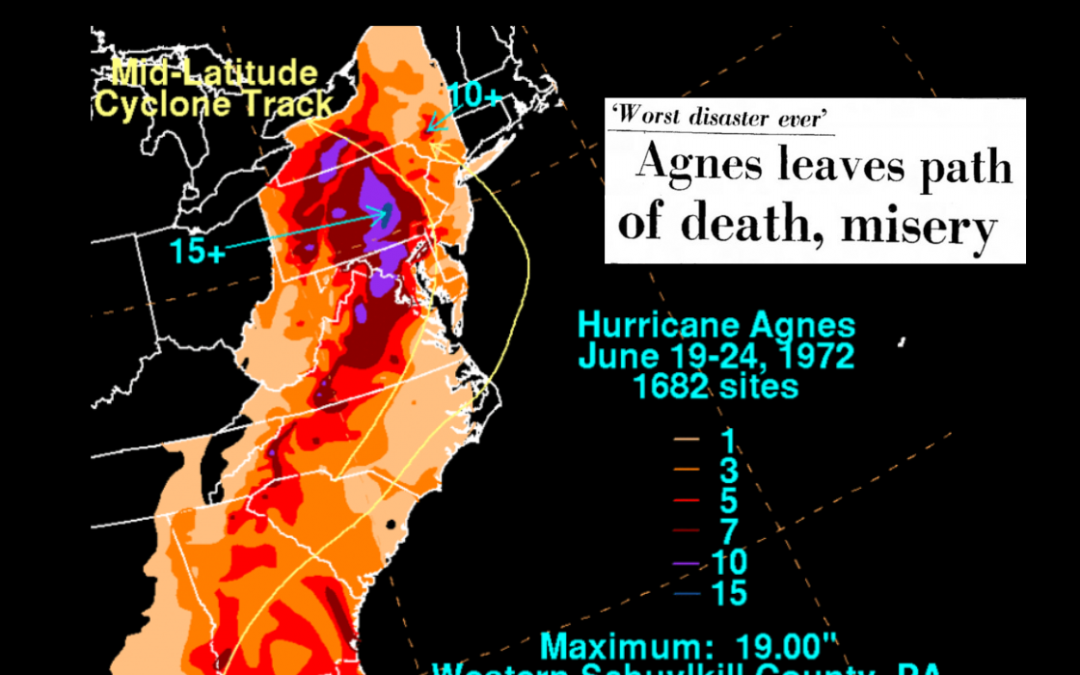CHAPTER 1: HURRICANE AGNES
Hurricane Agnes began as a tropical depression in the Caribbean on June 14, 1972. On the 16th it was upgraded to hurricane status and named Agnes.
On June 18th it made landfall in the Florida panhandle.
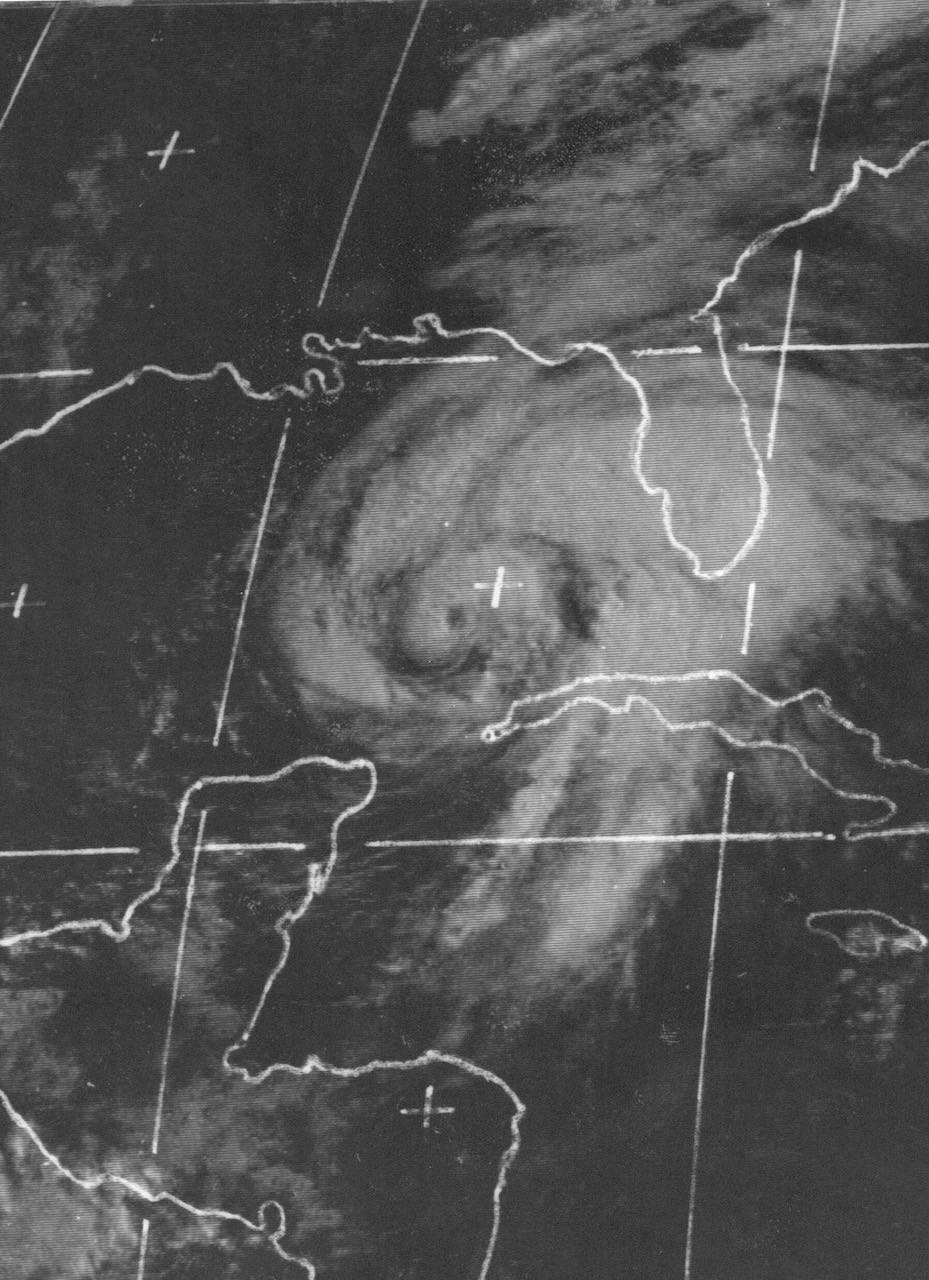
National Oceanic and Atmospheric Administration (NOAA) satellite image shows Hurricane Agnes near peak intensity on June 18, 1972.
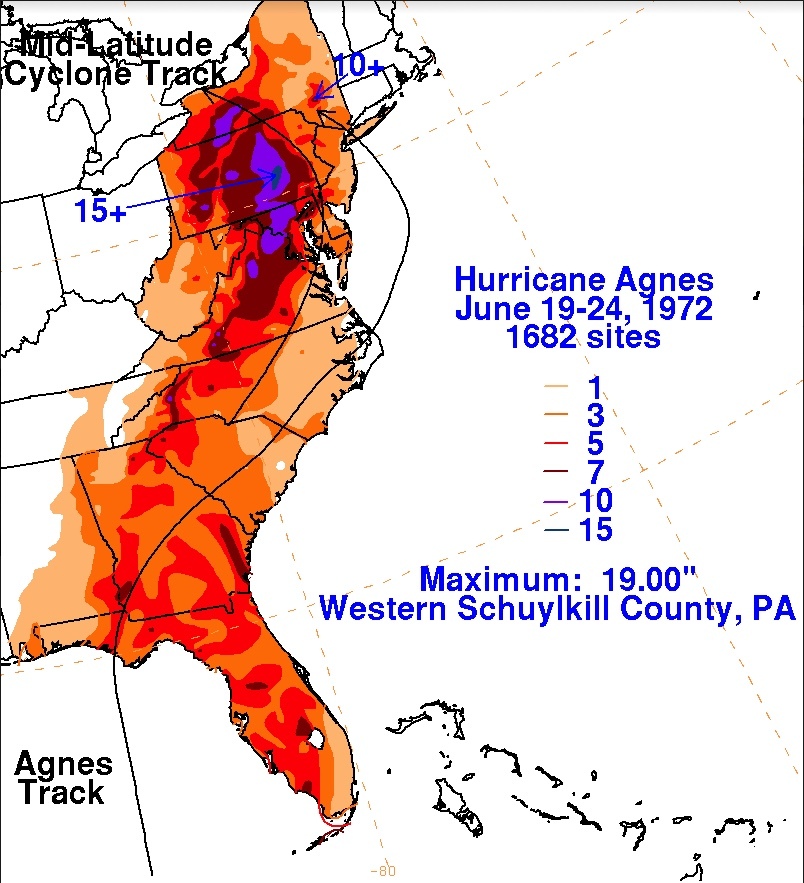
Hardest hit was the 25 mile long Wyoming Valley of Pennsylvania’s Luzerne County that included the river-front towns of Scranton, Wilkes-Barre, and Pittston.
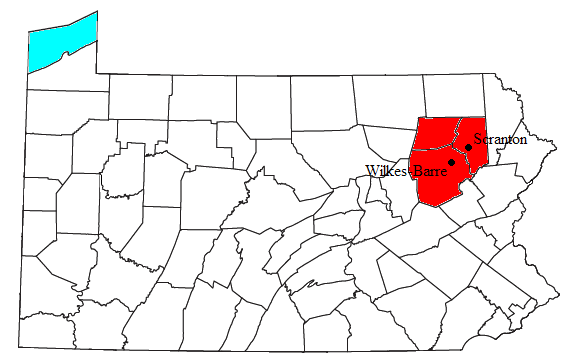
CHAPTER 2: DEVASTATION
In Pennsylvania on June 23rd the Susquehanna River overflowed its banks and overwhelmed the dikes. Houses, farms, and businesses were flooded and swept away. Machinery in factories was ruined.
In Harrisburg the Governor’s Mansion was under water, and Governor Milton Shapp had to evacuate it by boat.
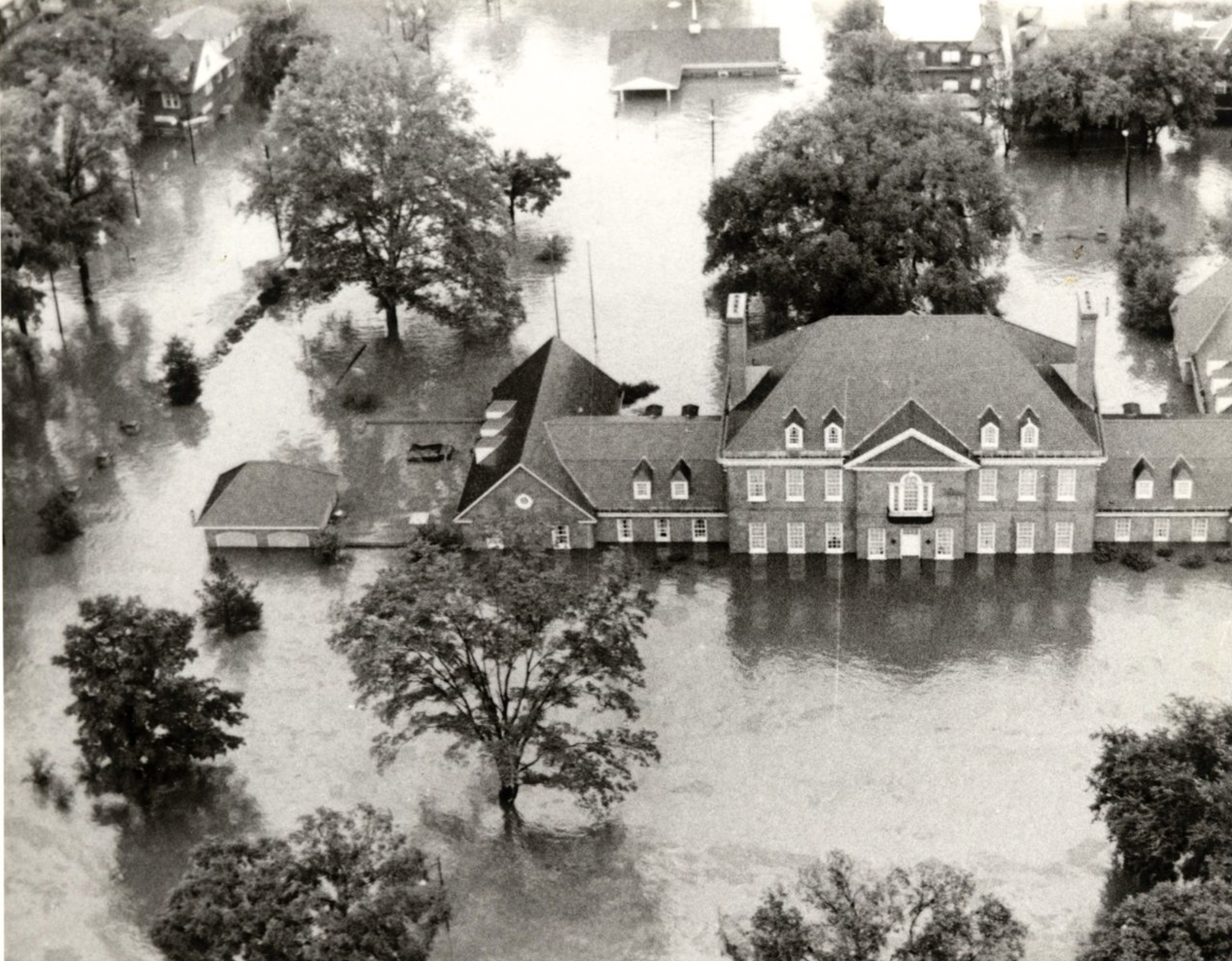
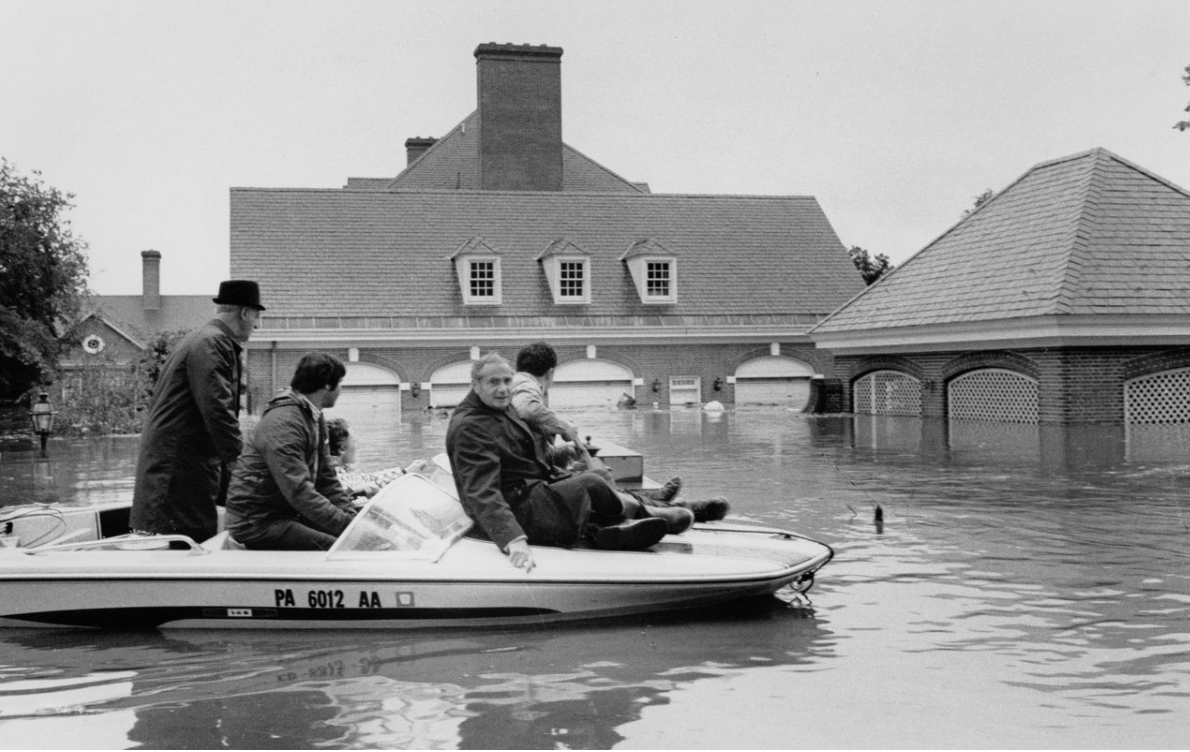
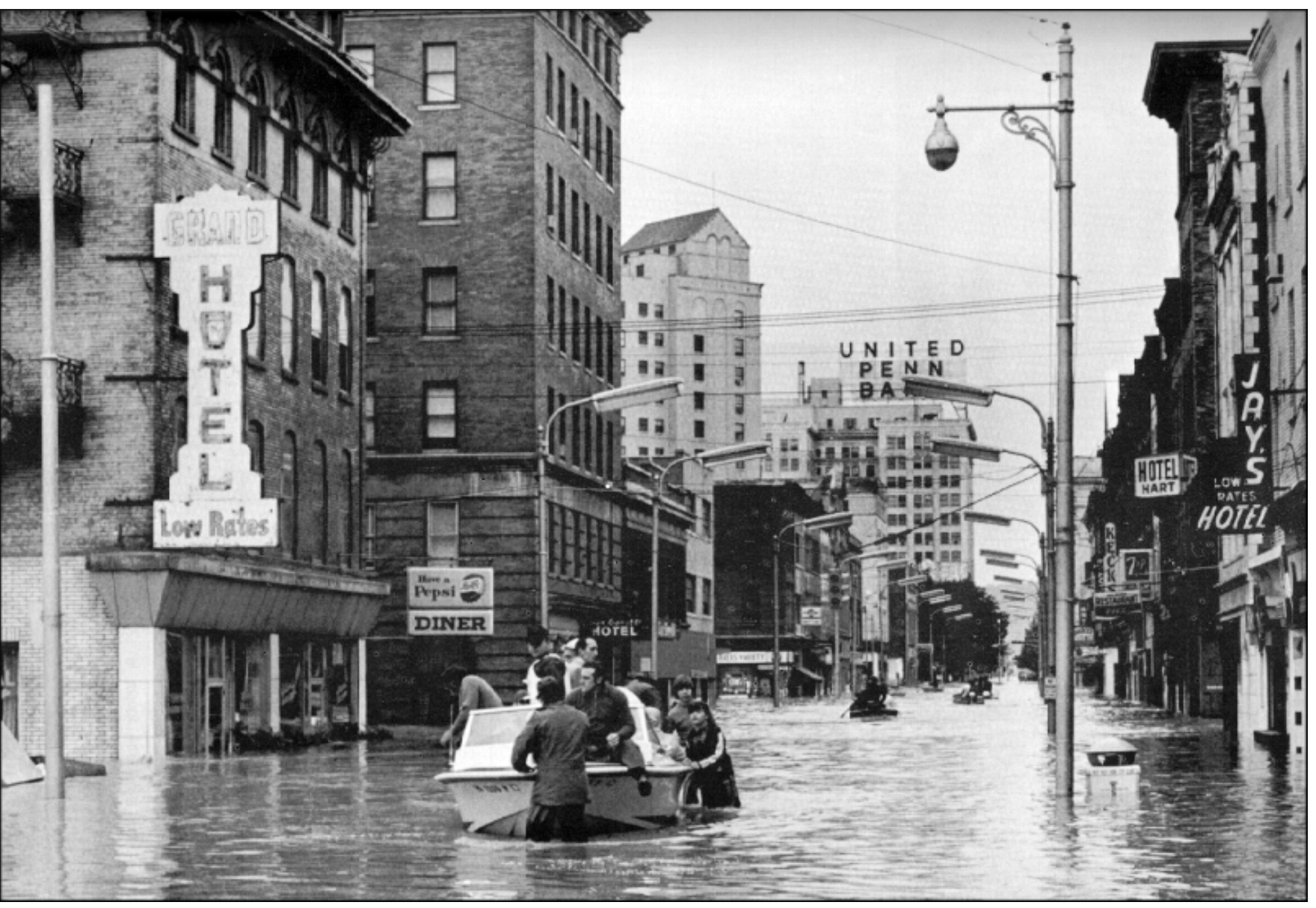
Downtown Wilkes-Barre flooded.
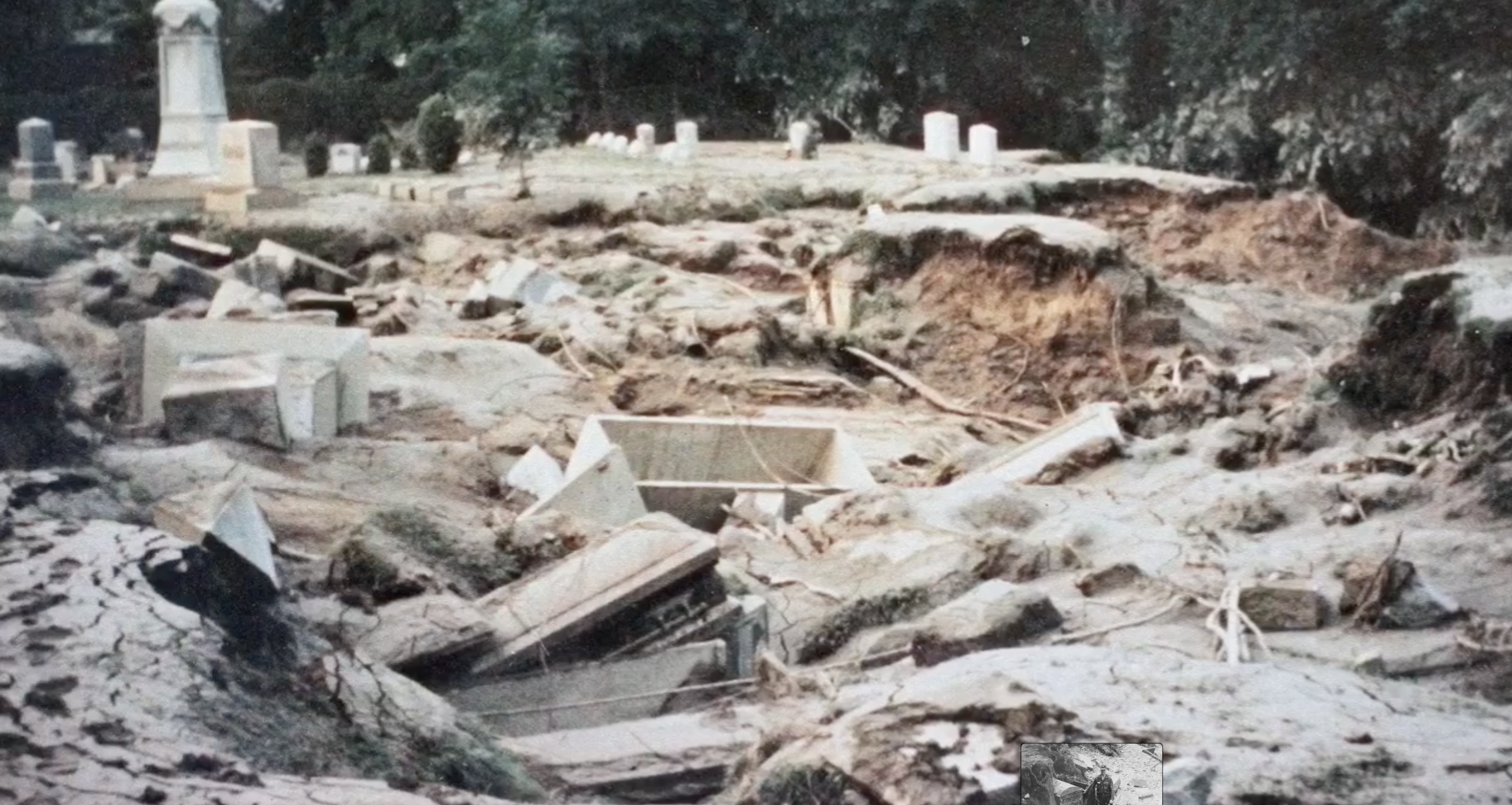
At the Forty Fort Cemetery graves were opened and bodies floated away.
CHAPTER 3: JUNE 24th— PRESIDENT NIXON INSPECTS THE DAMAGE
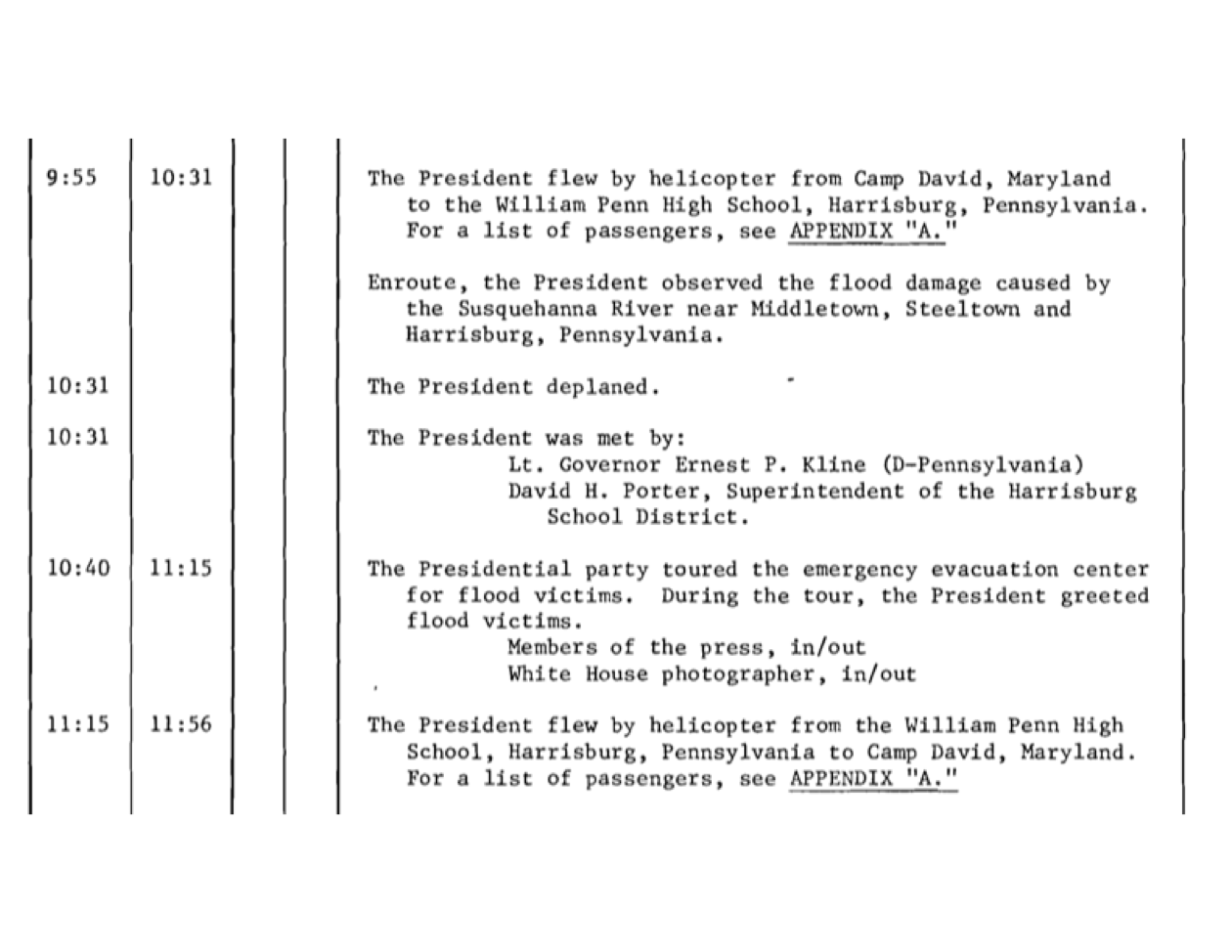
Excerpt from the President’s Daily Diary for June 24, 1972.
On June 24th the President flew from Camp David to see for himself. He was shocked and moved as Marine One flew low over the devastated landscape.
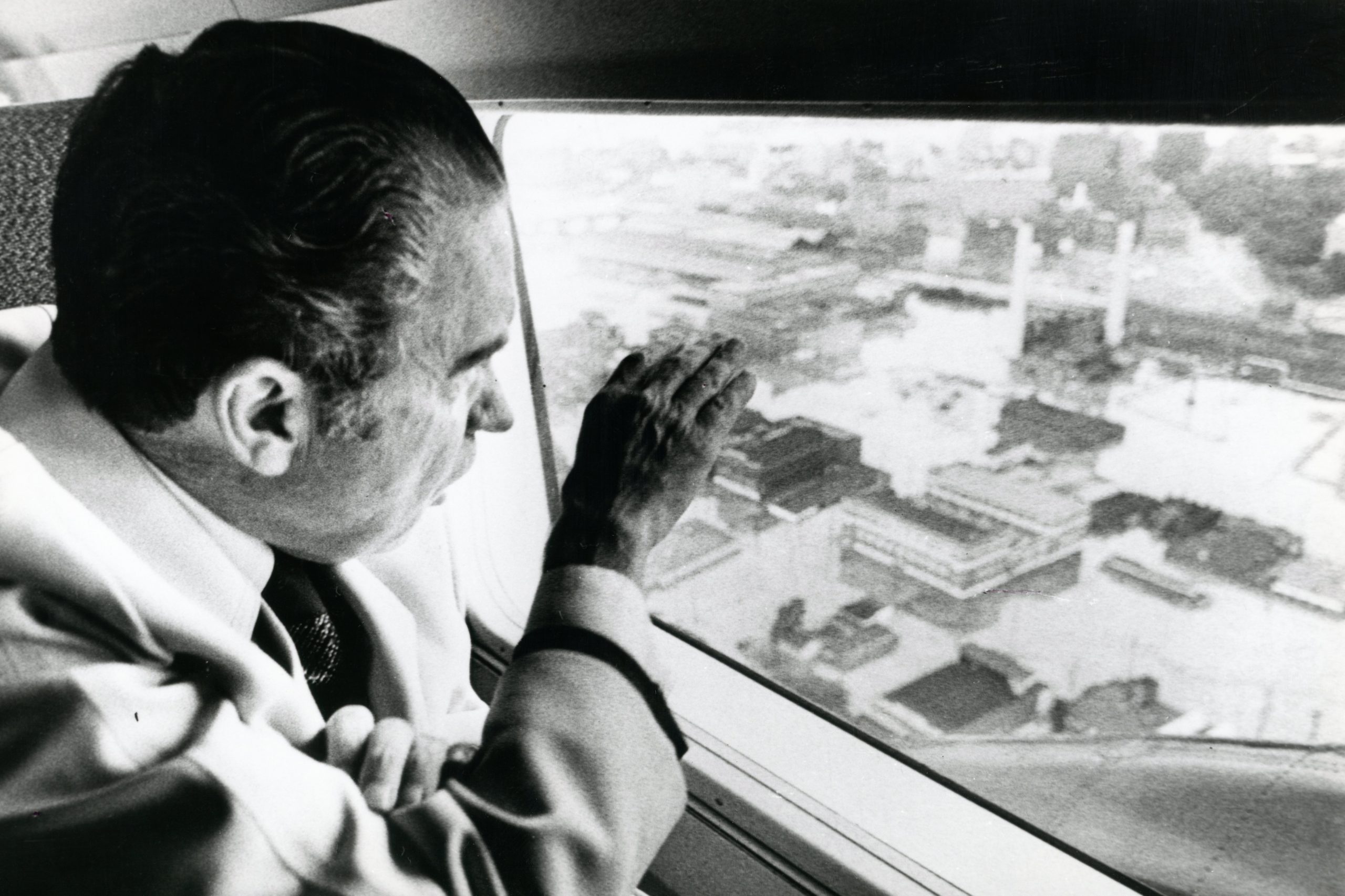
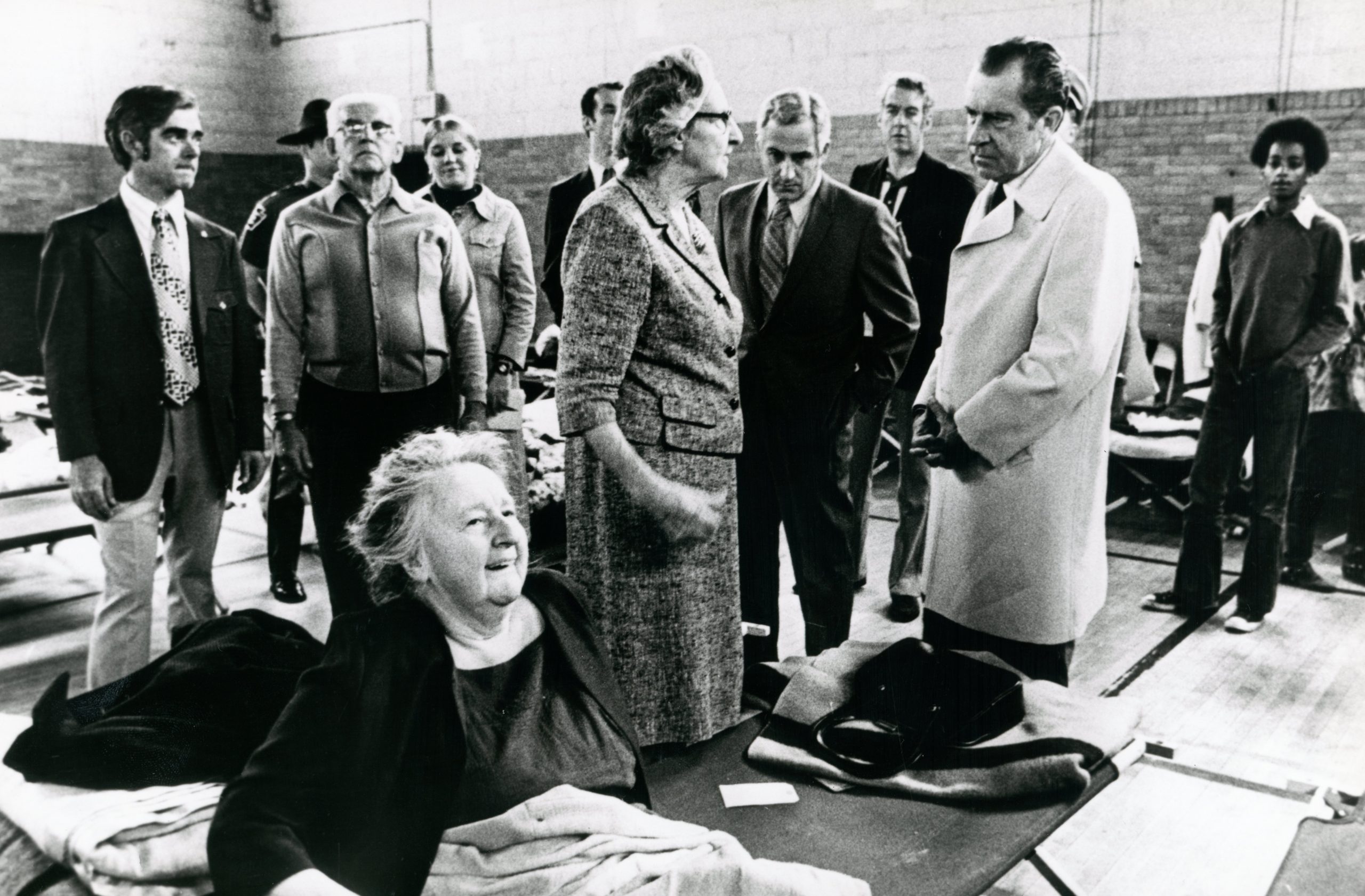
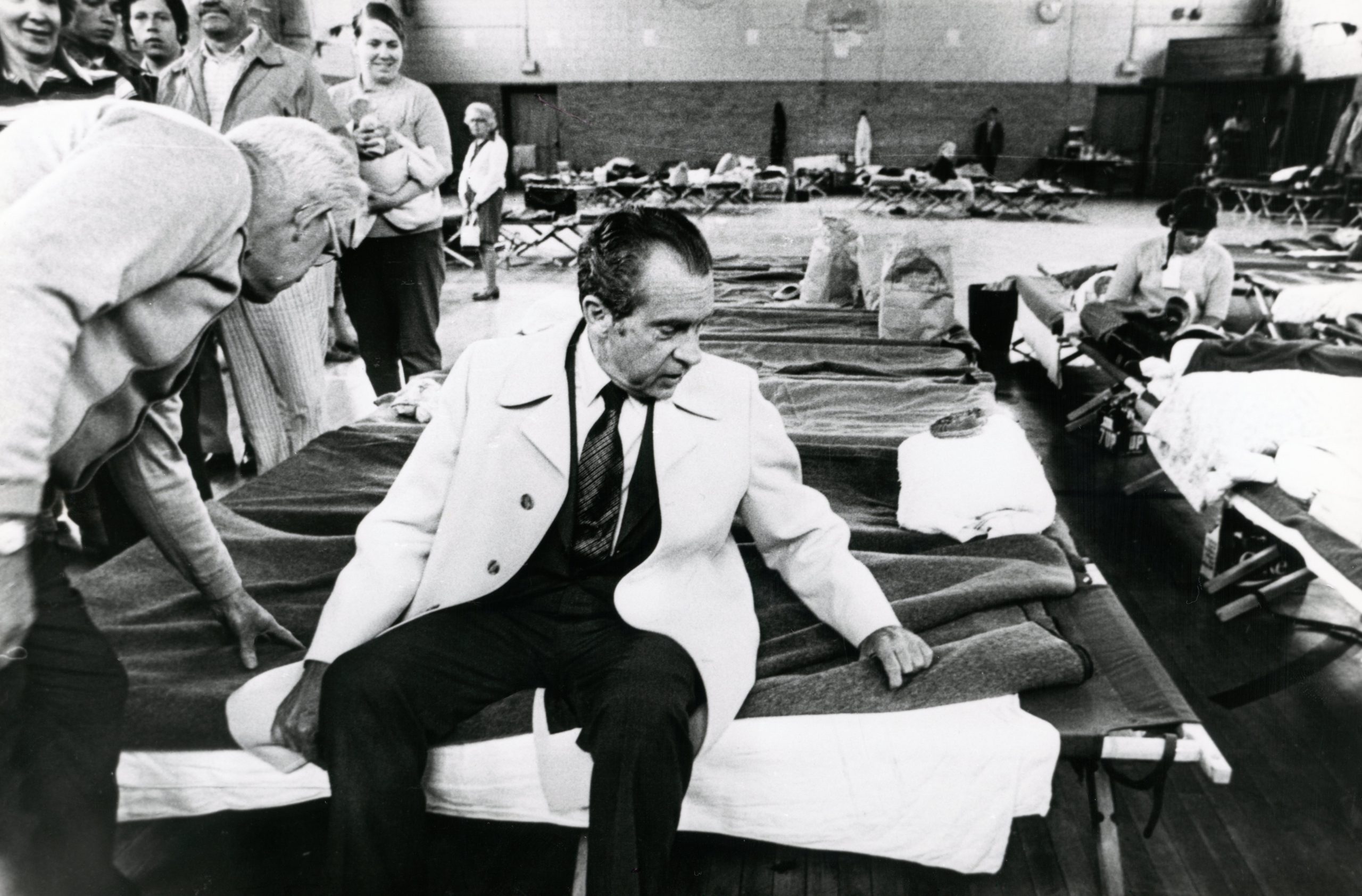
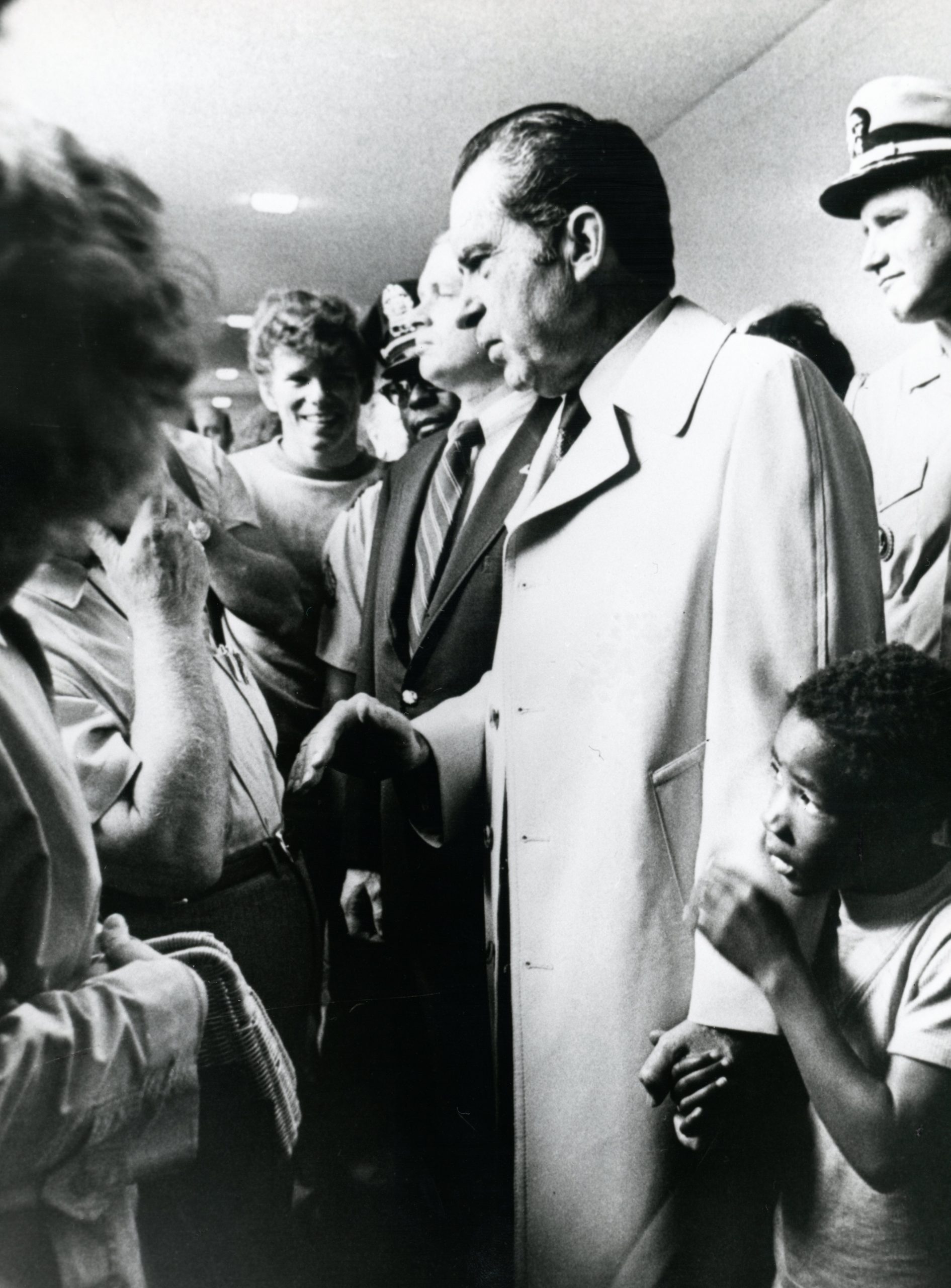

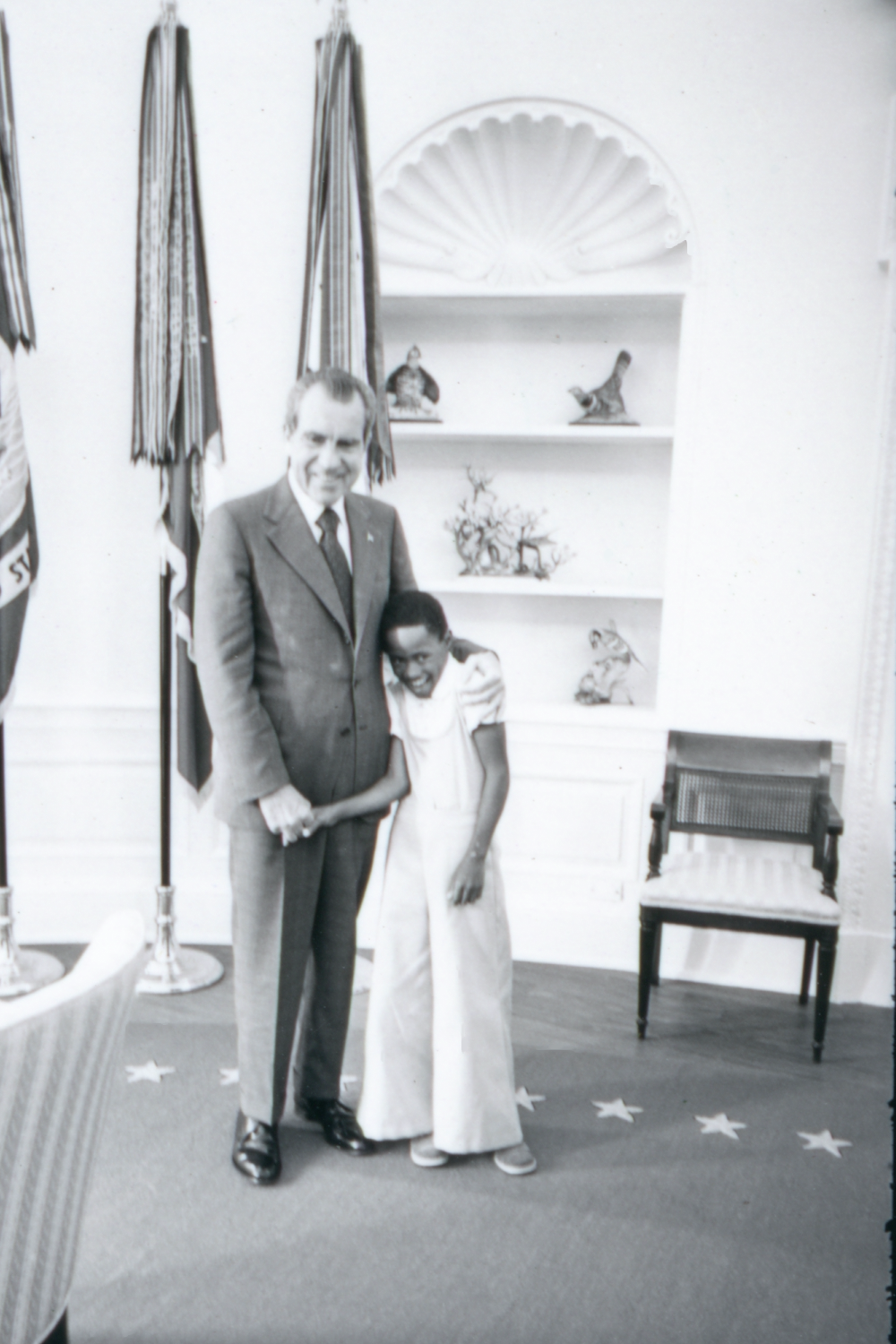
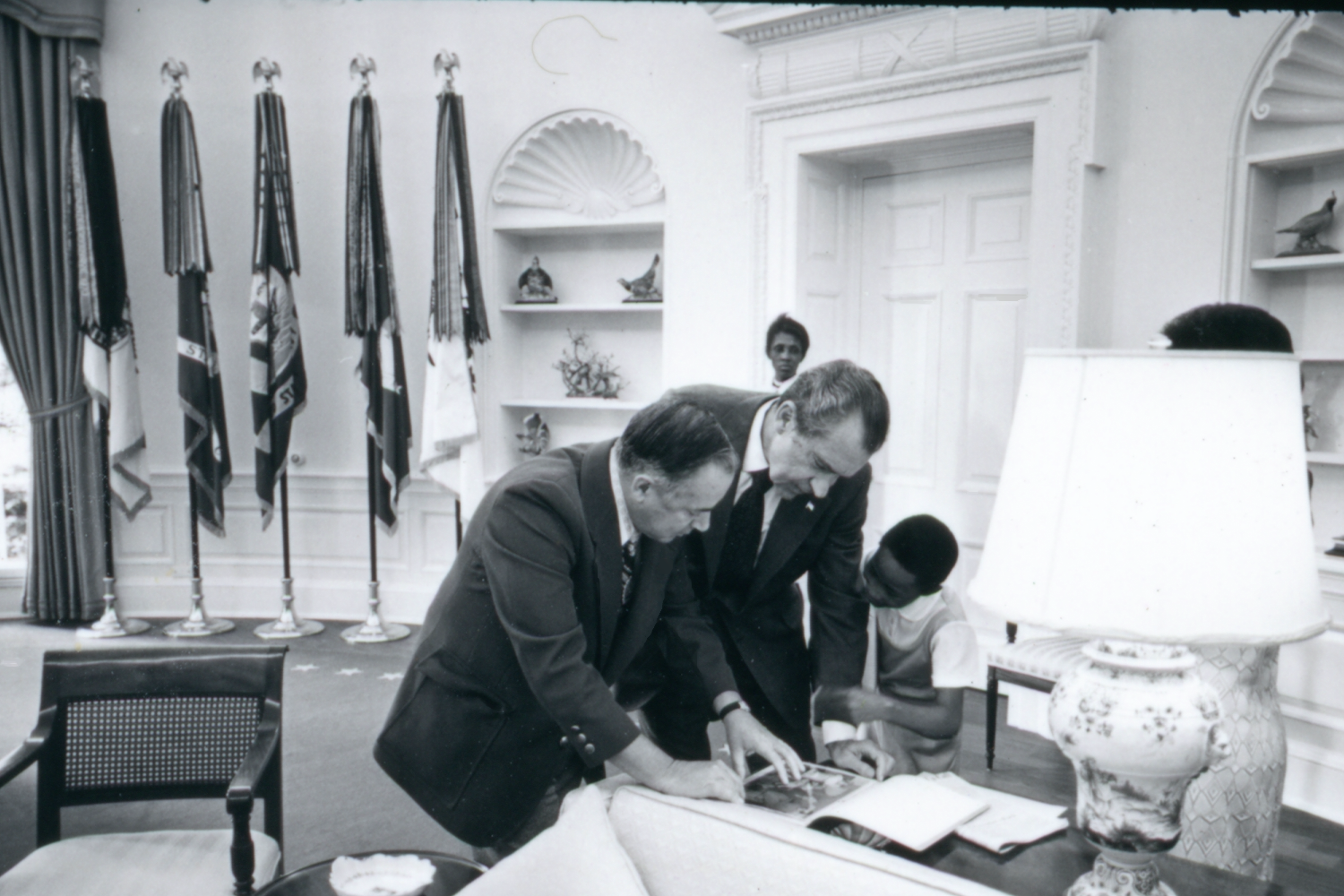
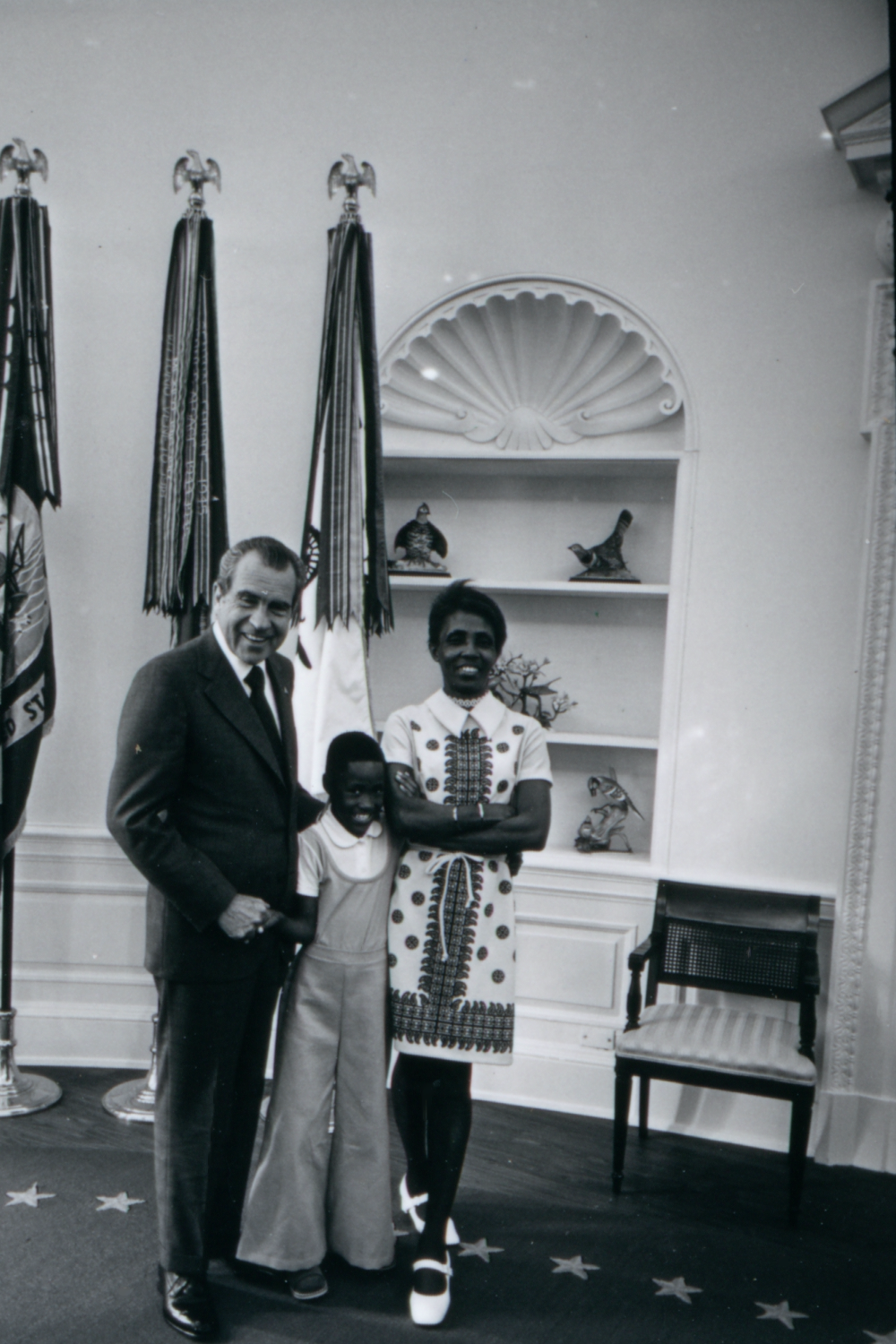
CHAPTER FOUR: PRESIDENT NIXON PROPOSES AGNES RECOVERY ACT OF 1972
On July 12, calling Agnes “the worst natural disaster in the whole of America’s history in terms of property damage and the extent of its devastation,” President Nixon called for more than $1.7 billion in new emergency funds. This represented “the largest single amount ever allocated to recovery efforts in this country.”
But much needed to be done. On July 17, the President sent to Congress his comprehensive and bold Agnes Recovery Act of 1972. This law included liberalized loan provisions and authorized grants to nonprofit educational organizations not covered by previous laws.
The President requested almost $1.6 billion additional funds. He noted that this was “the largest single request of its kind in our history.” Most of this money would be used for disaster loans, with $1.3 billion allocated to the Small Business Administration and $1.8 million for the Farmers Home Administration.
On August 2nd, the frustrated President sent a message to Congress urging immediate action on the Agnes Relief Act and proposing an amendment increasing funding.
After three weeks there was at least some good news. Some progress was being made. More than 350,000 victims were already receiving temporary shelter, food, and medical treatment. Temporary insurance benefits would be paid to the estimated 70,000 workers unemployed because of the storm.
CHAPTER 5: THE ROMNEY DEBACLE AND CARLUCCI TO THE RESCUE
Considering that Agnes was a complete surprise and the devastation caused was, in many ways, unprecedented, the federal government had done a remarkable job mobilizing forces and resources, struggling under the worst possible conditions to deliver unprecedented amounts and kinds of assistance.
Inevitably, with dozens of separate federal agencies involved, there were glitches and delays. For many on the ground, homeless and hurting and impatient for results, the glass seemed to be half empty, with bureaucracy and red tape standing in the way.
Secretary of Housing and Urban Development George Romney, confident that the glass was half full, visited Pennsylvania on August 9th. He was blindsided by the raw and negative reaction he received.
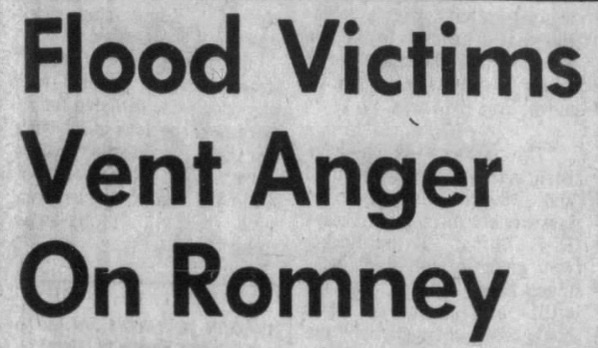
The President, having been reassured that the recovery was proceeding apace, suddenly had a potential disaster on his hands.
Two days later, on August 12th, the President put White House Aide Frank Carlucci in charge of Agnes relief and recovery.


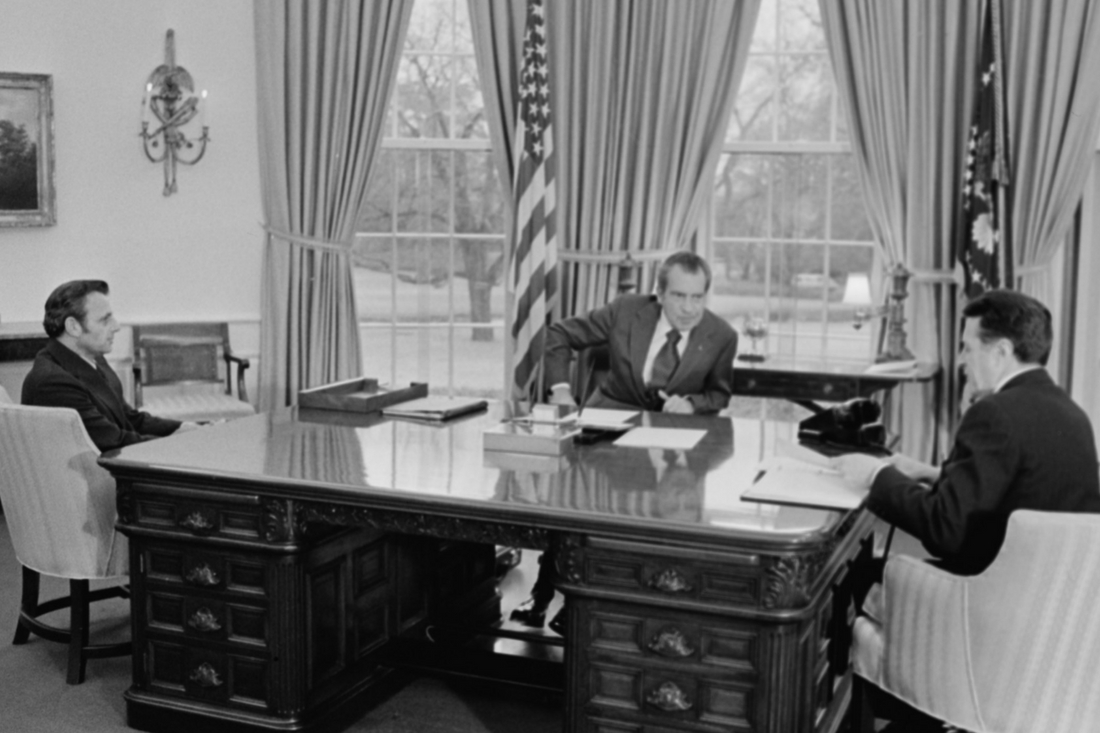
Deputy OMB Director Frank Carlucci (left) and Director Caspar Weinberger with the President in the Oval Office.
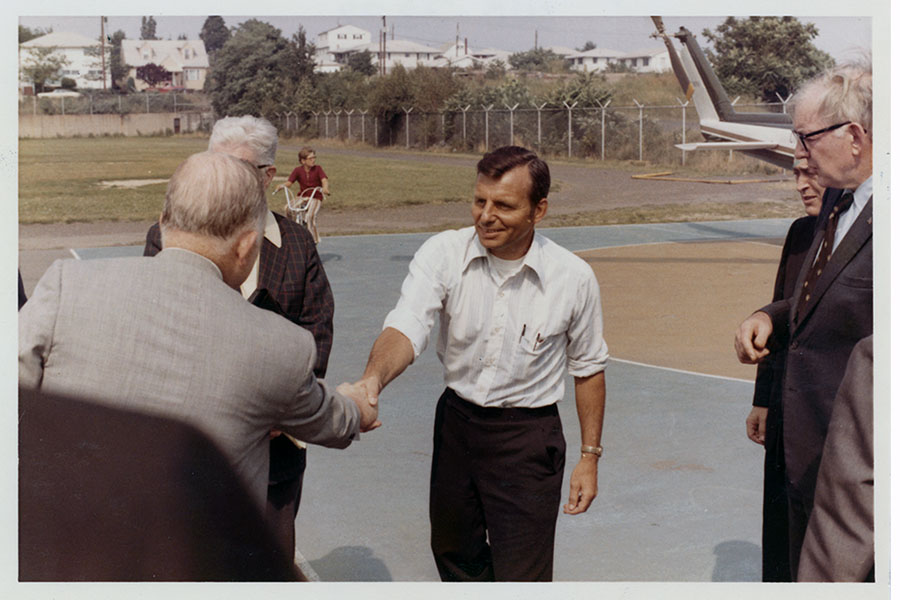
August 12, 1972: Frank Carlucci arrives in Wilkes-Barre as President Nixon’s personal representative.

Frank C. Carlucci
Frank Carlucci, Deputy Director of the Office of Management and Budget, was the White House point man on Hurricane Agnes. On August 10th, the same morning the Romney debacle hit the front pages, Carlucci had conducted an impressive East Room briefing for agency representatives, state leaders, and the media. The transcript runs twenty-seven pages of detailed Q and A. While demonstrating a tour de force mastery of the current situation and the available data, when appropriate, Carlucci turned the floor over to experts including the Director of the Office of Emergency Preparedness (OEP), the Assistant Director of the Small Business Administration (SBA), the Chief of the Army Corps of Engineers, and Undersecretary of Labor Laurence Silberman.
Frank Carlucci had been born in Scranton and grew up in the region. He knew the terrain and he understood the people. Until the job was done he lived on site in a trailer with the sign: “The President’s Personal Representative.” From the first day he worked tirelessly, holding daily “Report to the People” press conferences. Every afternoon from 4-5 PM he held open office hours when anyone could talk to him.
Perhaps most important, as the President’s personal representative, with the President’s clout backing him up, he was able to focus and channel the work of the scores of federal agencies with their different programs and personnel.
At last, on August 21st, Congress passed the President’s mid-July Agnes Recovery Act.

CHAPTER 6: SEPTEMBER 9TH — THE PRESIDENT RETURNS TO PENNSYLVANIA
At 10:35 on the morning of September 9th –a month since he had been tasked with salvaging the Agnes situation– the President met with “his Agnes Tsar”–as the local press was referring to Carlucci.
Earlier that morning the White House Press Office had released Carlucci’s “Report on Agnes Recovery Efforts in Wyoming Valley.”
Nixon’s handwritten notes indicate how impressed he was by the report and the way Carlucci had turned things around.
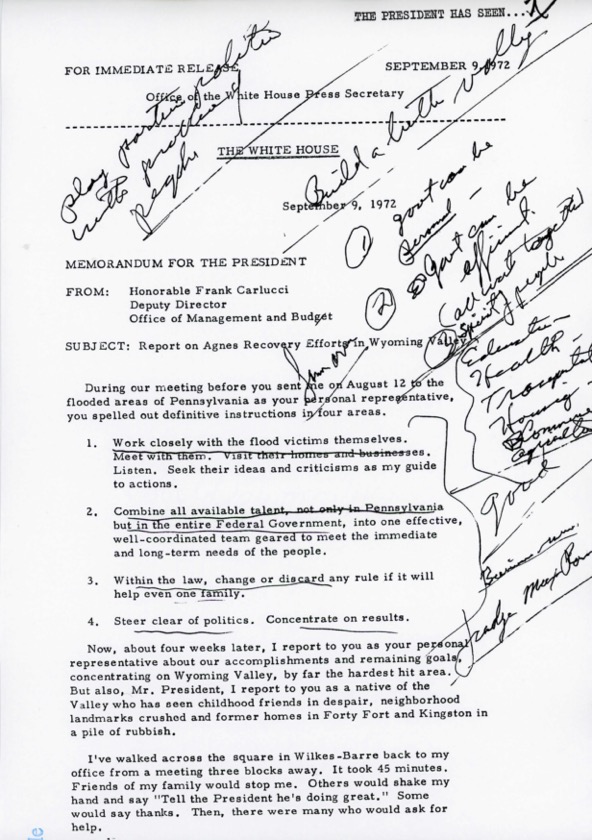
Transcription of the President’s handwritten notes from top left:
Play partisan politics with problems of people [referring to Gov. Shapp and other Democratic leaders and activists who were criticizing the administration’s response and making extravagant demands and suggesting Vietnam War funds be spent on Pennsylvania].
Build a better valley
1 govt can be personal
2 Govt can be efficient
(all work together
3 Spirit of people
Education
Health
Transportation
Housing
Commerce
Agriculture [referring to the federal agencies involved in Agnes relief]
Good [referring to underlined sentence “Combine all available talent, not only in Pennsylvania but in the entire Federal Government, into one effective, well-coordinated team geared to meet the immediate and long-term needs of the people.”]
Business men [referring to the proactive role that several local business leaders had taken in the recovery effort]
Judge Max Rosenn [referring to a Nixon-appointed Federal Appeals Court judge who was playing a major role in Agnes relief]
During their conversation the President picked up the phone and, less than an hour later, along with Domestic Council Director John Ehrichman, he and Carlucci were aboard Marine One heading to Wilkes-Barre for an unannounced and impromptu on site inspection.
Although the devastation was still dire there were signs of recovery and rebuilding everywhere. As they drove through Forty Fort, a wedding party emerged from the United Methodist Church. The President asked the driver to stop. He joined the totally surprised 26 year old newlyweds Daniel and Cathy Conte, posing for photos and autographing their marriage license.

After visiting one of the mobile homes that had been sent as emergency housing, the President paused on the porch to address the crowd.
This video is from a trove is extraordinary 16mm video that WBRE and WYOU Eyewitness News researchers rediscovered in basement storage. In advance of Agnes’ 50 anniversary, it has been digitized, remastered, and enhanced. The complete collection may be viewed on the PAhomepage website:
https://www.pahomepage.com/agnes-at-fifty/agnes-at-fifty-a-look-back-at-the-flood-of-1972/
By the end of September Carlucci was thinking about returning to Washington. The Philadelphia Inquirer, assessing his performance, called him the Good Samaritan of the Flood Area.

The dramatic turnaround spoke for itself. Only three months after Agnes hit, and a month since he had taken the reins;
- three quarters of the 13,816 homeless were now winterized mobile homes or campers.
- the Small Business Administration had made $145.1 million in loans to over 17,000 individuals and businesses.
- Some 15% of the more than 1,000 stores had reopened.
- The federal government had spent or contracted for $350 million in assistance to help clean up damage estimated at $1 billion.
CHAPTER SEVEN: THE DISASTER RELIEF ACT OF 1974
On May 8th 1973 President Nixon sent to Congress the Disaster Relief and Preparedness Act of 1973.

He wrote:
“While we cannot fully control the occurrence and the impact of disasters, we must do all we can to prepare for them, to prevent them, and to mitigate and remedy their effects. The legislation I am submitting today can help us do all these things more efficiently and more effectively and I strongly urge its prompt enactment.”
A year later, on May 8th 1974, Congress passed the Disaster Relief Act of 1974. President Nixon issued a Statement about the Disaster Relief Act:
Since taking office, I have had to declare over 180 major disasters in 42 States. The amount of Federal assistance given to disaster victims has been greatly expanded, and this Administration has made every effort to provide this aid more equitably and expeditiously. Last year, I sent a message to the Congress outlining this Administration’s proposals for improving the assistance which the Federal Government can provide in time of major disasters and other emergencies and for increasing the role of State and local governments in disaster recovery. The Congress, while altering the particulars of some of my proposals, has incorporated in this bill the essential features of a sound disaster assistance program.

